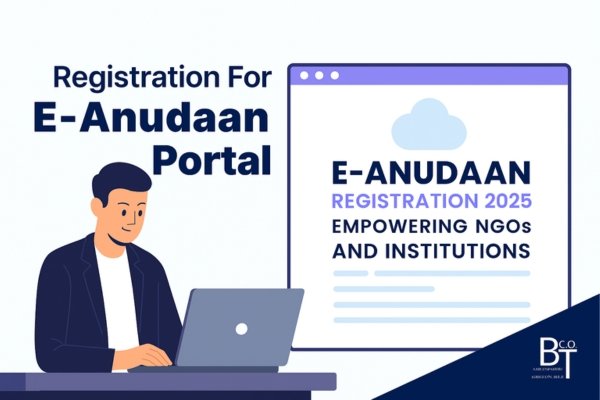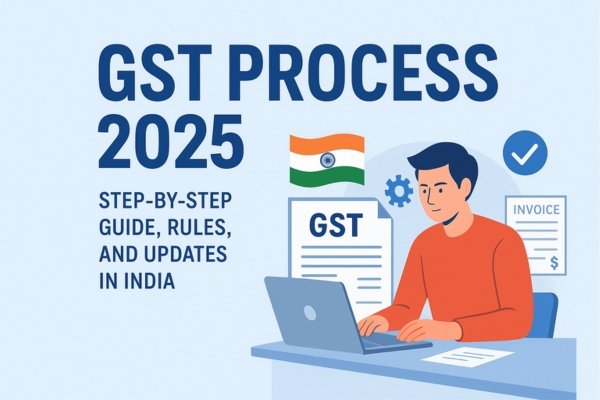Top 7 Reasons to Convert Pvt Ltd to LLP – Benefits, Process & Cost Guide
For applying Convert Pvt Ltd to LLP Click Here… What Does It Mean to Convert Pvt Ltd to LLP? Converting a Private Limited Company (Pvt Ltd) to a Limited Liability Partnership (LLP) means transforming your existing company structure into a more flexible business model that combines the benefits of a company and a partnership. When you convert Pvt Ltd to LLP, your business continues to exist but under a new legal framework governed by the Limited Liability Partnership Act, 2008. The main reason entrepreneurs choose to convert Pvt Ltd to LLP is to reduce compliance costs, simplify operations, and enjoy greater management flexibility. Unlike a company, an LLP doesn’t have to hold board meetings or file as many returns, which makes it easier for small and medium-sized businesses to operate smoothly. In simple terms, conversion allows the same business to continue with the same partners, assets, and liabilities — only the structure and regulatory requirements change. Meaning and Concept of Conversion The conversion of Pvt Ltd to LLP is a legal process approved by the Ministry of Corporate Affairs (MCA) in India. It allows a private company to register itself as a Limited Liability Partnership, ensuring that all its existing assets, rights, and obligations are automatically transferred to the new LLP. The concept behind this conversion is to provide business owners with limited liability protection, just like in a company, but with the operational flexibility of a partnership. In an LLP, the partners are not personally responsible for the debts of the business — their liability is limited to their agreed contribution. When you convert Pvt Ltd to LLP, the business gains recognition as a separate legal entity while maintaining continuity. There’s no need to dissolve the company or start from scratch — the LLP simply takes over the same business identity in a more tax-efficient and compliance-friendly manner. Key Differences Between Private Limited Company and LLP Before you decide to convert Pvt Ltd to LLP, it’s important to understand the fundamental differences between the two business structures. Aspect Private Limited Company Limited Liability Partnership (LLP) Legal Framework Governed by the Companies Act, 2013 Governed by the LLP Act, 2008 Ownership Structure Requires minimum 2 shareholders and directors Requires minimum 2 designated partners Compliance High compliance – annual meetings, board resolutions, and multiple filings Low compliance – fewer filings and no mandatory board meetings Taxation Taxed as a company, including dividend distribution tax Taxed as a partnership, no dividend tax Liability Limited to shareholding but strict penalties for non-compliance Limited to agreed contribution, flexible liability structure Profit Distribution Dividends taxed at multiple levels Profits distributed without additional tax burden Conversion Flexibility Can be converted to LLP or Public Ltd Company Once converted, cannot revert to Pvt Ltd easily In short, an LLP is more cost-effective, flexible, and less compliance-heavy compared to a Pvt Ltd company. That’s why many entrepreneurs and small business owners prefer to convert Pvt Ltd to LLP — it provides legal protection while simplifying business management. Why Convert Pvt Ltd to LLP? Many entrepreneurs in India choose to convert Pvt Ltd to LLP because it offers a smarter and more flexible business structure. A Limited Liability Partnership (LLP) provides the perfect balance between the security of a company and the ease of a traditional partnership. Over the years, LLPs have become a preferred choice for startups, small businesses, and family-run enterprises that want to cut down on compliance costs while retaining legal protection. When you convert Pvt Ltd to LLP, your business can continue to operate under the same name and management but with simpler regulatory obligations and fewer restrictions. This conversion not only saves money but also allows the owners to focus more on growth rather than administrative burdens. Let’s explore the major reasons and benefits behind this shift. Major Reasons for Conversion There are several compelling reasons why business owners choose to convert Pvt Ltd to LLP: Tax and Compliance Benefits When you convert Pvt Ltd to LLP, one of the biggest advantages you gain is tax efficiency. Here’s how: These benefits make LLPs an ideal structure for businesses that want to grow sustainably while keeping compliance under control. Flexibility in Management and Ownership One of the key reasons to convert Pvt Ltd to LLP is the flexibility it provides in terms of management and ownership. In an LLP, the partners have the freedom to manage the business directly without being bound by formal company procedures. The internal structure of an LLP is governed by a mutual LLP Agreement, allowing partners to decide how profits will be shared, responsibilities divided, and decisions made. Moreover, LLPs make it easier to bring in new partners or transfer ownership interests. There’s no requirement to issue or transfer shares like in a Pvt Ltd company, making the process smoother and faster. This flexibility gives entrepreneurs more control over their business, encourages collaboration, and allows the organization to adapt quickly to changes — all while maintaining legal protection. Legal Framework for Conversion When you decide to convert Pvt Ltd to LLP, it’s important to understand the legal framework that governs the process. The conversion is regulated by the Limited Liability Partnership Act, 2008, and the Companies Act, 2013, which together outline the eligibility, documentation, and procedural requirements. The process ensures that all assets, liabilities, and obligations of the existing Private Limited Company are automatically transferred to the new LLP without affecting its continuity. Once the conversion is complete, the company is dissolved, and the LLP continues to operate as the same business under a new structure. Let’s break down the key legal provisions and government notifications related to this process. Relevant Sections under the LLP Act, 2008 The Limited Liability Partnership Act, 2008, specifically provides a structured way to convert a Private Limited Company to an LLP. The relevant sections are: Together, these provisions ensure a smooth transition when you convert Pvt Ltd to LLP, maintaining legal continuity and protecting the interests of all stakeholders. MCA (Ministry of Corporate










